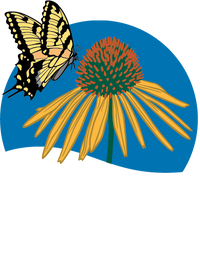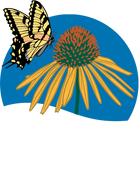Beauty, Berries, and Butterflies—Shadblow Does It All!
Amelanchier canadensis - Shadblow
It is time to give this native tree its due! Know as Shadblow, Serviceberry, Juneberry and numerous other locally significant common names, this small scale tree is one of the best for show and for supporting native species in the landscape.
BUTTERFLY MAGNET

Amelanchier is a host plant for over 120 species of Lepidoptera including the Red Spotted Purple Butterfly and the Viceroy. That is a huge number of species whose life cycle is dependent on this narrow, upright, multi-stem tree. But, beyond all the butterflies and moths that are tied to this species, this tree is a native bird magnet for nesting, cover and its irresistible June maturing dark blue to black berries. These berries are edible for us humans, too but good luck fighting those native birds for them!
PROFUSE WHITE BLOOM
Blooming in a cloud of white blossoms in late April or early May, its profuse bloom makes it a premier early nectar source for native bees, butterflies, and hummingbirds.
Whether in the yard or in the wild landscape it puts on an unforgettable spring show that is augmented later in the year with a striking fall foliage display in shade or yellows and reds.
Shadblow makes an excellent small specimen with its 10’ width and 20-25’ height. Easy to grow, this beauty tolerates partial shade, too.
WHERE DID THAT COMMON NAME COME FROM?

Now, what about that crazy common name, Shadblow? This seemingly meaningless name makes sense once you know that it came from colonial residents of the east coast who saw that its profuse bloom coincided with the seasonal migration of shad, an important food fish for both colonials and Native Americans!




